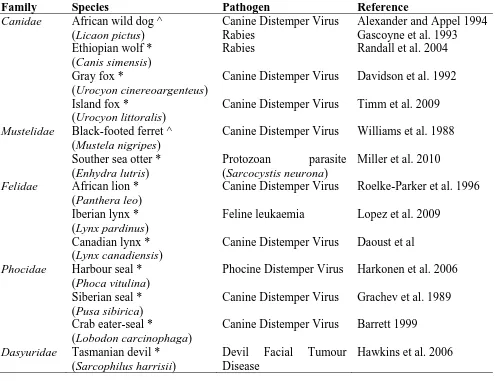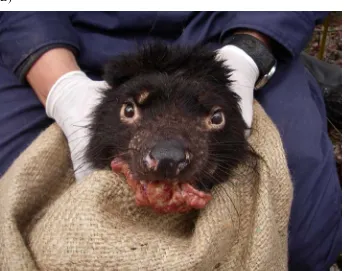The ecology and epidemiology of devil facial tumour disease
Full text
Figure




Related documents
One possible strategy to expand the range of VMWs' services and to improve their actions and knowledge would be to strengthen the VMW training curriculum. Since most of the VMWs
Generalized linear models using Poisson distributions were used to analyze the association of house characteristics (eave gaps, wall types, roof types, number of windows, rooms
To evaluate the stability of the peptidase activities detected by zymography, the proteolytic profile from lar- val instars was verified by comparing the enzymatic ac- tivities
b Splenic cells from protein immunized mice were stimulated with peptides and IFN-γ secretion in the culture supernatant was analysed by ELISA to evaluate T cell
In the following study, conventional light microscopy (LM) of Giemsa-stained thick blood smears were compared to the new LED fluorescence technique (ledFM) and conventional
In vitro purified CD19 + B and naïve CD4 + T cells were cultured in the presence of native, heat-inactivated or periodate- treated EgPSC-ESPs, and the differentiation of these
Recently, the WHO advocated for scaling up malaria control interventions in order to accelerate malaria elimination [4] Several malaria control strategies were developed
a Bar chart comparing of bronchial IL-33 expression in normal, non-PE and PE lung samples and photomicrographs of immunohistochemical staining of bronchial IL-33 localization; b





